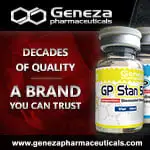LIV-52 and milk thistle have too many inconclusive and negative studies re effectiveness
n-Acetylcystiene and rALA have consistently solid positive studys demonstrating liver protection and regeneration.
So you can keep on taking liv 52 and milk thistle because thats what everybody else does, or you can follow the science and take rALA and NAC.
---
as an example, 17aa stress is similar to alcohol stress on the liver - here are some abstracts on liv 52 and alcohol:
Natural and complementary therapies for substance use disorders.
Curr Opin Psychiatry. 2005 May;18(3):271-6. Dean AJ. Kids in Mind Research, Mater Child and Youth Mental Health Service and Mater Pharmacy Services, Mater Hospital, South Brisbane, Queensland, Australia.
To review recent studies that have examined the efficacy of natural and complementary therapies as treatments for substance use disorders and their complications. Neither vitamin E nor Liv 52 had a useful effect in alcohol-related liver disease
Herbal medicines for liver diseases.
Dig Dis Sci. 2005 Oct;50(10):1807-12. Department of Hepatology, Postgraduate Institute of Medical Education and Research, Chandigarh, 160012, India.
Herbal medicines have been used in the treatment of liver diseases for a long time. A number of herbal preparations are available in the market. This article reviews four commonly used herbal preparations: (1) Phyllanthus, (2) Silybum marianum (milk thistle), (3) glycyrrhizin (licorice root extract), and (4) Liv 52 (mixture of herbs). Phyllanthus has a positive effect on clearance of HBV markers and there are no major adverse effects; there are no data from randomized controlled trials on clinically relevant outcomes, such as progression of chronic hepatitis to cirrhosis and/or liver cancer, and on survival. Silymarin does not reduce mortality and does not improve biochemistry and histology among patients with chronic liver disease; however, it appears to be safe and well tolerated. Stronger neominophagen C (SNMC) is a Japanese preparation that contains 0.2% glycyrrhizin, 0.1% cysteine, and 2% glyceine. SNMC does not have antiviral properties; it primarily acts as an anti-inflammatory or cytoprotective drug. It improves mortality in patients with subacute liver failure and improves liver functions in patients with subacute hepatic failure, chronic hepatitis, and cirrhosis with activity. SNMC does not reduce mortality among patients with cirrhosis with activity. SNMC may prevent the development of hepatocellular carcinoma in patients with chronic hepatitis C, however, prospective data are lacking. Liv 52, an Ayurvedic hepatoprotective agent, is not useful in the management of alcohol-induced liver disease.
Liv.52 in alcoholic liver disease: a prospective, controlled trial.
J Ethnopharmacol. 2003 Jan;84(1):47-50. Department of Pharmacology, Faculty of Medicine, University of Kelaniya, PO Box 6, Thalagolla Road, Ragama, Sri Lanka.
Liv.52, a hepatoprotective agent of herbal origin, is used empirically for the treatment of alcoholic liver disease in Sri Lanka. We conducted a controlled trial to assess the efficacy of Liv.52 in patients with alcoholic liver disease. Patients with evidence of alcoholic liver disease attending outpatient clinics were included in a prospective, double blind, randomized, placebo controlled trial. During the trial period, 80 patients who fulfilled inclusion criteria were randomly assigned Liv.52 (cases; n = 40) or placebo (controls) the recommended dose of three capsules twice daily for 6 months. All patients underwent clinical examination (for which a clinical score was computed), and laboratory investigations for routine blood chemistry and liver function before commencement of therapy (baseline). Thereafter, clinical assessments were done monthly for 6 months, while laboratory investigations were done after 1 and 6 months of therapy. There was no significant difference in the age composition, alcohol intake and baseline liver function between the two groups. The two-sample t-test was used to analyze data obtained after 1 and 6 months of therapy against baseline values. There was no significant difference in clinical outcome and liver chemistry between the two groups at any time point. There were no reports of adverse effects attributable to the drug. Our results suggest that Liv.52 may not be useful in the management of patients with alcohol induced liver disease.


 Please Scroll Down to See Forums Below
Please Scroll Down to See Forums Below 










